Are pedometers (aka step counters) accurate? Do they really measure how many steps you take? Is the calorie burn accurate? Are they effective in helping people lose weight or stay healthy? Are they worth the money? Do they even matter?
These are all questions I’ve had when learning about pedometers. They seem to be on the rise in the consumer market right now. Kinda trendy. And fun. But are they worth it?
I decided to do a little test to find out. Because I’m weird like that and wildly curious about anything fitness related. And I thought other people would be interested in the results as well. I had nothing invested. I’m not being paid by anyone, nor did I receive anything for free. I borrowed and/or purchased 7 different major brand pedometers to do a comparison. A Nike Fuel, Jawbone Up, Fitbit Flex (I had two of these), Fitbit Zip, iFit, and Striiv play. I honestly wasn’t sure what to expect.
The test was done over three days. The first day I wore 4 different pedometers on my right wrist, and one pedometer on my waist. The second day I wore 5 pedometers on my right wrist (two of which were the SAME brand–Fitbit Flex) and 2 pedometers on my waist. The third day I just wore a Fitbit Flex on my left wrist, a Fitbit Flex on my right wrist, and a Fitbit Zip on my waist.
And yes, I looked like a complete freak show. But it was in the name of consumer research so it was okay.
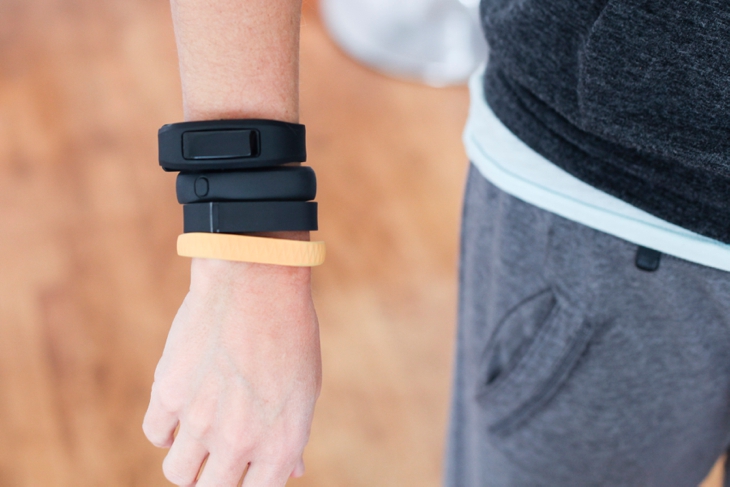
The results were…….interesting. But before you make any judgments about the initial results, stick with me to the end for my assessment.
I measured how many steps were registered by each device each day. I also tracked how many steps were registered during different exercise/high activity periods.
The results from DAY ONE:

Day One happened to be Halloween. I knew I’d be doing a lot of walking that day. More walking, less with my arms. As you can see above, the results were wildly different. A difference of 7,939 steps. Stick with me though. Don’t discount them yet. I think I have an explanation for this at the end.
The results from DAY TWO:

Day Two was on a Saturday when I did a fair amount of house cleaning and pick up (my life every.single.day) so I was using my arms more this day. A difference of 3,414 steps. (I only had the second Fitbit and Fitbit Zip for days 2 and 3)
I also tracked steps during exercise. I only exercised for THIRTY minutes each day.

This workout was more arms than legs which I think explains the difference between the wrist pedometers (which were fairly consistent with each other) and the waist one. A difference of 282 steps.

This workout was a lot of movement in my arms and legs. A difference of 626 steps. (If anyone’s looking to release some aggression, this workout is for you!)
I then walked on the treadmill for 10 minutes at a consistent pace (3.5 speed).

The results from the pedometers seemed MOST consistent when walking at a consistent pace on the treadmill. A difference of 166. But if we take out the Nike Fuel (which always registered lower–I’ll talk more about that in a minute), the difference is only 36 steps. And the two pedometers on my waist were only one step different.
And for the last test, I wanted to compare the SAME brand pedometer which was the Fitbit. Day Two I wore 2 Fitbit Flex pedometers on the SAME arm and the Fitbit Zip on my waist.

There was a difference of 229 steps in the wrist Fitbits, and a difference of 1913 steps between the wrist Fitbit and the waist Fitbit.
Day Three (which was a Sunday and I don’t move nearly as much) I wore Fitbit1 on my left wrist, Fitbit2 on my right wrist, and the Fitbit Zip on my waist for part of the day.

A difference of 1331 steps between the Fitbit1 on my left wrist and the Fitbit2 on my right wrist, and a difference of 2339 steps between the Fitbit on my wrist and the Fitbit on my waist. It appears the wrist you wear the pedometer on makes a difference in the step count.
That’s a whole lot of pedometers and a whole lot of numbers. And as you can see, the results are wildly different from pedometer to pedometer. So of course the initial conclusion may be pedometers aren’t really that accurate after all and possibly a waste of money.
But.
Here’s my assessment from the experience.
Yes, the pedometers varied greatly from the highest tracking pedometer (usually the Striiv Play) to the lowest tracking pedometer (always the Nike Fuel). And they seemed inconsistent in different activities.
But at the end of the day, I don’t think it really matters as long as each individual pedometer is consistent with itself. The entire goal of wearing a pedometer is to get people to MOVE. So as long as the pedometer I choose to wear consistently tracks my movement from day to day, and inspires me to move more, it’s doing its job. Whether that pedometer says 8990 steps or 13566 steps, if I MOVE MORE from day-t0-day, it’s technically done its job.
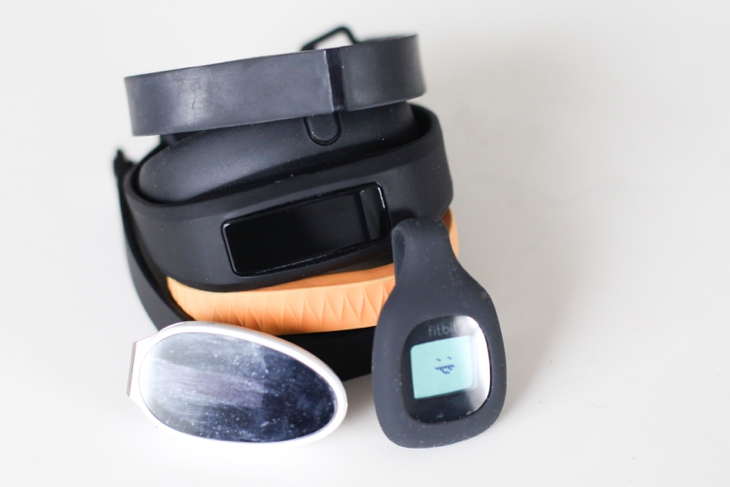
General Assessment
**Not all pedometers are created equal. Meaning you can’t compare steps from one pedometer to steps from another pedometer (including pedometers that are the SAME brand). From this experiment it is evident they don’t track exactly the same. I NEVER got my Nike Fuel band above 10,000 steps (I actually wore that one for about a week) but easily got the Striiv play above 10,000 steps each day. That’s not to say one is better than the other. If I know my Nike Fuel is more stingy in its steps, then I set a realistic goal for THAT pedometer. If I know my Striiv Play is more generous in steps, I set a higher goal for number of steps.
**The general recommendation for steps seems to be 10,000. But as I just mentioned, 10,000 steps on one pedometer is not the same as 10,000 steps on another pedometer. You’d have to set your steps goal based on each individual pedometer. Once you wear one for a few days, you can get a feel for what’s a realistic/ambitious goal for your particular pedometer.
Do I recommend buying a pedometer?
Yes and No.
I’m a stay-at-h0me-mom to very young and active kids (one of which is a crazy two year old constantly on the move and not safe when unsupervised), part-time photographer, and after 10pm writer/blogger so I’m literally on my feet all.day.long. Moving more is not an issue for me. I exercise 30ish minutes a day, 6 times a week. I personally don’t need something on my wrist to motivate me to move more in this season of my life. In fact, I felt a little anxious once I started wearing them feeling like I literally had to be moving all the time to get those step counts up (I’m pretty competitive even with myself). It was definitely interesting to see how many steps I took–a general idea of how much I move. But I personally am not planning to keep one.
But. If you need to MOVE more and you need something to motivate you to do that, a pedometer could be a good start. People who have desk jobs, don’t exercise everyday, or spend a lot of time sitting throughout the day, knowing how many steps you’re taking can motivate you to get up and take more. To move more. I’ve heard several people say they were at 9,000 something something something steps at 10pm at night, so they paced the hall until they got to 10,000 steps before they went to bed. Of if you hit halfway through the day and you haven’t even hit 2,000 steps, you take a long walk on your lunch break. Or if they’re competing against family or friends (some of the pedometers allowed you to sync up with friends/family) and they want to win that day, they’d stay up late continuing to move so they could win. (I had a great time talking trash with my friend who also has a Striiv Play. She’s recovering from a gnarly battle with cancer so it wasn’t entirely fair of me, but she’s a good sport!) If any of those scenarios fit your life situation, then YES, get a pedometer.
I am first in line to advocate for people moving more! So if pedometers help people do that, and get in the habit of moving more, I’m all for it.
But. But but but but but. I do NOT think pedometers are the magic ticket to weight loss or transformed bodies. Yes, moving more is better than moving less. But if you’re looking to LOSE weight, get healthier, transform your body, a pedometer alone won’t do that for you. What we put in our MOUTHS will be 80-90% of the battle with losing weight or getting healthy. The other 10-20% will come from SMART exercise. Hard interval training type exercise to lose weight, and smart weight lifting type activities to tone and build lean muscle.
(screenshots of the various pedometer apps)
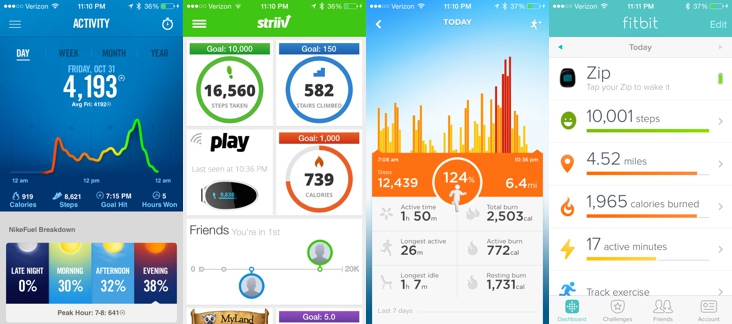
Which one would I recommend?
If you think having a pedometer will help you get on the journey to moving more and building a life style where regular movement and activity is a daily habit, I’d be happy to give recommendations based on your personal needs. OR, if you’re already fairly active, but you want something to push you just a little more, I can also give recommendations. I don’t think these pedometers are a one brand fits all. It entirely depends on WHY you want one and what information you’re looking to get from them. So if you plan to buy one and are looking at one of the brands I “field-tested”, please feel free to ask in the comments and I’ll give you some suggestions. My suggestions would be based on how active you already are, what type of activities you normally do from day-to-day, would you be doing it with other people (friends or family members all getting the same brand), what information you want to get and why, etc.
Is the calorie count accurate?
All of the pedometers I wore tracked calories. I wrote that all down too, but I think it’s irrelevant information. I didn’t feel like the calorie tracking was very accurate especially when measuring exercise. It’s hard for the pedometers to estimate how hard a particular workout is unless you’re walking or running. Any other type of exercise I would say the pedometers are not accurate in calorie count. Instead of relying on tracking calories through the step counters, I would just wear a heart rate monitor during exercise.
Overall conclusion (I totally feel like I’m back in 9th grade science writing that): The number of steps varied (sometimes greatly) from pedometer to pedometer. You can’t compare steps from one pedometer brand to another. Each pedometer had varying features that would be attractive to different users (based on WHY you want one). The pedometers were all equally comfortable for me but some were bulkier than others. The apps were all equally easy to use and track information. The pedometers definitely motivated me to move more even though I already feel like I’m moving plenty. If I were personally going to buy one, I’d get the Nike Fuel (because it makes you work the hardest for your step count) or the Fitbit (because it seemed the most consistent). But I also saw benefits to some of the other brands as well (all questions I’m willing to answer in the comments if anyone is interested or has specific questions).
I’m curious. Do YOU have a pedometer? If so, leave me a comment and tell me which one and if you like it. Does it motivate you to move more and would you recommend it to your friends?
OR, are you looking to buy a pedometer? If so, leave a comment telling me which one or ask for recommendations if you have questions on which one would be best for you.
P.S. If you’re interested in more health related articles, check out the “Let’s Be Healthy” section for a lot more information including my personal journey to lose all of my baby weight (60+ pounds).
If you liked this article and want to stay in touch, enter your name and e-mail to subscribe to periodic newsletters, tips, and other helpful information. And right now you’ll receive TEN phone photography tips that will immediately change the quality of the photos from your phone for FREE!




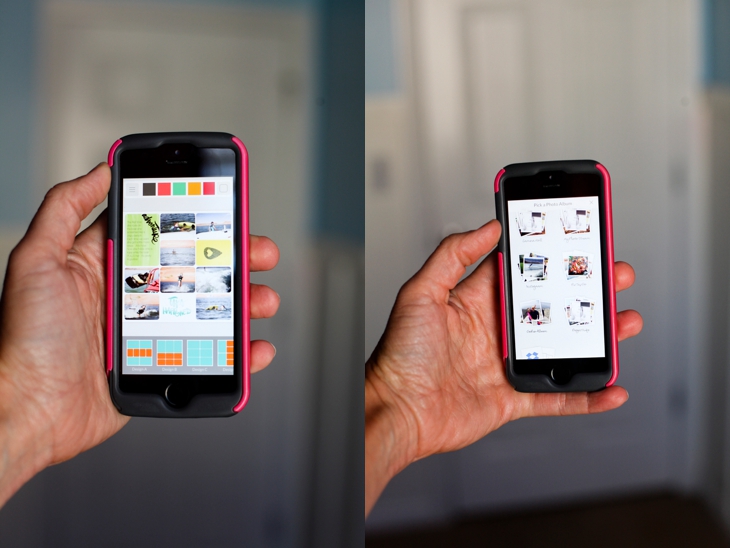


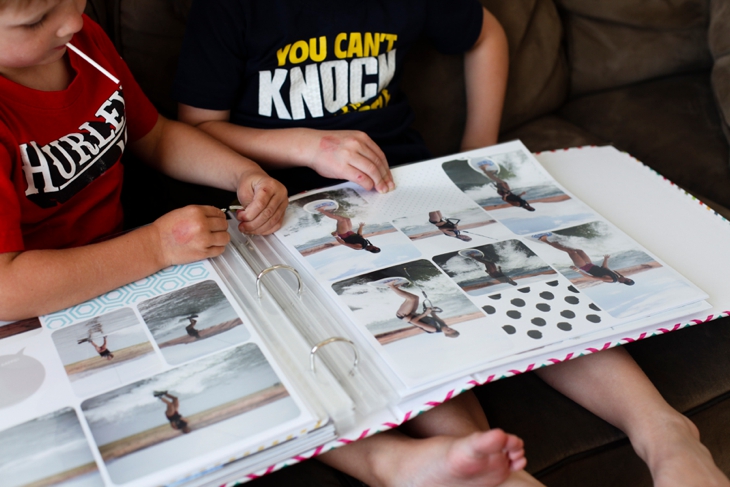



 Here’s a comparison of the 12×12 print and the 8×8 print
Here’s a comparison of the 12×12 print and the 8×8 print

 And for a closer view of some of the spreads I’ve done using the Project Life App
And for a closer view of some of the spreads I’ve done using the Project Life App

